Ordinary kids’ bicycles, as opposed to the motorized kind, haven’t gotten much attention in the CPSIA outcry. But they’re in trouble too. More: see April 6 update, including an informative CPSC submission (PDF) by Mayer Brown for the Bicycle Product Suppliers Association; and an upcoming meeting of the alarmed industry.
Posts Tagged ‘CPSIA and toys’
“Possible Solutions To Improve the CPSIA”
The Handmade Toy Alliance tries to take a moderate and reasonable approach toward reforming a law that is itself neither moderate nor reasonable. Its recommendations:
- 1. Component-based testing…
- 2. Exemptions from testing…
- 3. Harmonization with European Standards…
- 4. Exempt permanent batch labeling…
- 5. Revisit the retroactivity of the CPSIA…
CPSIA: the countable costs
In some ways the most distinctive costs of the Consumer Product Safety Improvement Act are the human-scale kind that are hard to measure — the handicrafters’ livelihoods blasted, the families unable to find sturdy winter clothes at the Goodwill, the kids who can’t get their dirtbikes serviced, the threats to vintage children’s books and to small-run items for special-needs kids.  But there are also a number of measurable, tangible economic costs that might capture lawmakers’ attention, and which affect larger, more sophisticated actors as well as the small producers, dealers and families that have found it so difficult to make their voice heard in Washington.
But there are also a number of measurable, tangible economic costs that might capture lawmakers’ attention, and which affect larger, more sophisticated actors as well as the small producers, dealers and families that have found it so difficult to make their voice heard in Washington.
- A survey by the Toy Industries of America says the law has already cost toy businesses more than $2 billion [Playthings, Toy News]. As readers will recall, the minibike/powersports industry projects that the ban on its youth products will cost $1 billion by year’s end. That’s $3 billion right there, representing only two of the many industries hit by the act; it doesn’t include (for example) apparel, resale (two apparel-making groups report $700 million in stranded inventory, costs to Goodwill and Salvation Army may exceed $270 million), books, school and party supplies, sporting goods, furniture, and so forth.
- The stock price of well-known kids’-apparel retailer Gymboree slid by 40 percent overnight early this month “on news that it took massive inventory write-offs in the most recent quarter and suffered sharp margin declines and sales losses, all as a result of the CPSIA”. At a conference call with investors, Gymboree chairman/CEO Matt McCauley noted that phthalates are found “in many screenprints”, which makes their ban an important issue for apparel. Remember the court’s last-minute ruling that the phthalates ban would have to be retroactive to existing inventory, even though the CPSC had given guidance to manufacturers that only post-Feb. 10 production would be affected? Attorney Aaron Colangelo of the Natural Resources Defense Council, who had litigated that case successfully, was quite dismissive about the difficulties of compliance at the time. Well, according to McCauley, that one decision rendered 1.7 million units of inventory at his chain unsalable. “As many of you know, we operate on a nine to 12-month product cycle,” he told the investors. But of course few on Capitol Hill seem to have thought it amiss for new rules to be imposed within a period of a few months, or, as with the court reversal, a few days.
-
Auction Bytes: “On March 14, 2009, Amazon.com will remove approximately 2,500 products from the Toys and Baby categories in order to comply with the Consumer Product Safety Improvement Act of 2008 (CPSIA). The company said it had not received certification of CPSIA compliance from the manufacturers of those products. Amazon will cancel all seller offers against the ASINs, and their detail pages will be removed from the site.” (company’s statement). For readers who are new to the subject, that does not imply that any of the 2,500 items pose any serious risk, nor does it imply that any particular item would fail to pass the new thresholds with flying colors.
 In many instances it indicates only that the makers have not gotten their ducks in a row to obtain GCCs, possibly because they’re unfamiliar with the process, or can’t afford the tests, or plan to get out of the business soon.
In many instances it indicates only that the makers have not gotten their ducks in a row to obtain GCCs, possibly because they’re unfamiliar with the process, or can’t afford the tests, or plan to get out of the business soon. - Note that as in the Amazon case, the much-publicized stay of CPSC enforcement for a year applying to most newly manufactured goods doesn’t in practice protect small makers from seeing their product lines squeezed out of major channels of commerce if they fail to launch a compliance program (no matter how unlikely it is that their knitted booties or wooden puzzles contain lead). To cover themselves from legal attack, deep-pocket retailers demand GCCs (general certificates of compliance). Last month, apparel-maker mentor Kathleen Fasanella wrote: “Most (okay, all) of the retailers I’ve spoken to, are still requiring GCCs [despite the stay]. Furthermore, they are enforcing the August standard of 300ppm.”
- Plum Privy has been compiling estimated costs of the law from news reports, with the tally already exceeding $4 billion. Persons in affected lines of work may want to check in at that site to offer additional information or refinements.
- Understatement of the year? Writing in Apparel mag, lawyers with Mintz Levin call the law “extremely burdensome and bewildering“.
CPSIA: transcripts, audio of Hugh Hewitt show
An audio is now up of my guest appearance yesterday on Hugh Hewitt’s radio show. And Canadian blogger Charles Henry has generously compiled a transcript of the segment, an especially useful resource because he’s embedded relevant links. He’s also posted a transcript of another segment of the show in which attorney/guest Gary Wolensky talks about this week’s big library/CPSC outcry, as well as vacant toy shelves (“That’s A CPSIA Toy, We Can’t Sell It To You“).
CPSIA and the “precautionary principle”
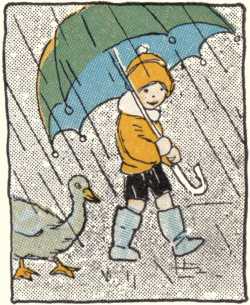
If CPSIA is premised on anything, it’s the idea that before makers of goods place items on the market, they should have to shoulder the burden of proving that they’re safe, even if it seems very, very unlikely on the face of it (as with books, cotton bibs, ballpoint pens, etc.) that they’re doing any significant harm. Is this perhaps an early application of the much-debated “precautionary principle“, which proposes that gaps in scientific knowledge be resolved against those who want to introduce anything new or potentially dangerous? Deputy Headmistress wonders. She also links to Rick Woldenberg who continues his revisionist looks at the Great Toy Scare of 2006-7, noting that in one much-publicized recall of 436,000 toys by Mattel, the trigger for the recall was that “TWO CANS OF PAINT slipped through its safety systems, and were spread ratably over 436,000 units. Hmmm – how dangerous do you think one Sarge car would be with 1/218,000th of a can of paint on it? This event was one of the sparks that triggered the mania leading to the CPSIA – the same mania that now sweeps up libraries.”
Brian Micklethwait, a while back, had a further relevant thought about whether the Precautionary Principle has itself been proven safe.
More: An interesting contribution from Dan Marshall at Change.org.
Public domain graphic: Grandma’s Graphics, Ruth Mary Hallock.
CPSIA: throwing away 500 stuffed animals
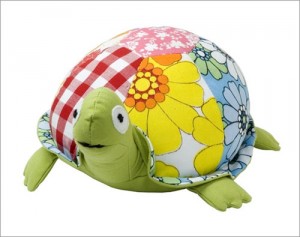 No, discarding 500 once-loved stuffed animals doesn’t really amount to much of a story amid scenes of billion-dollar disruptions caused by this law elsewhere around the country. But if you’re one of the people who run the Second Fling consignment shop in Goldsboro, N.C., it might still seem kind of sad.
No, discarding 500 once-loved stuffed animals doesn’t really amount to much of a story amid scenes of billion-dollar disruptions caused by this law elsewhere around the country. But if you’re one of the people who run the Second Fling consignment shop in Goldsboro, N.C., it might still seem kind of sad.
CPSIA chronicles, March 4
[Broken link on CPSC surveillance program fixed now.]
- The internet is a-hum with reactions to a proposal by West Virginia state representative Jeff Eldridge (D-Big Ugly) to ban Barbie dolls “and other similar dolls that promote or influence girls to place an undue importance on physical beauty to the detriment of their intellectual and emotional development.” That idea is predictably going nowhere (at least in West Virginia: Montpelier, Vt. is said to have voted a Barbie ban*), but Eldridge can perhaps take consolation in that CPSIA has already (with virtually no media taking note of the fact) banned the sale of vast numbers of vintage Barbies that pose equal dangers of symbolic or psychological impairment, if not of actual physical dangers. This 1999 New York Times piece describes how Mattel was “beginning an effort to eliminate” the use of polyvinyl chloride (PVC) compounds in the dolls, and that environmental activist groups contended that PVC often included lead as well as (less surprisingly) the plastic softeners phthalates, some but not all of which are banned by the law.
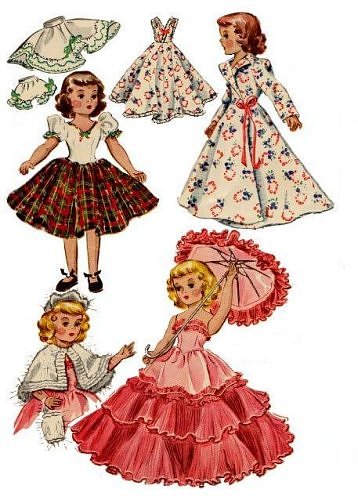 As Denise Van Patten noted in an About.com write-up in January, it is not clear what old dolls are still going to be lawful to sell, distribute or give away under CPSIA, if they cannot be fit into the “adult collectible” exception that covers items so expensive they will be kept out of children’s hands. Soft plastic is only the beginning of the problem. Most older dolls have paint as a component — often only in the rendering of the eyes, but that’s enough to count as a resale red flag under the CPSC’s Feb. 9 guidelines. Hair and dyed fabric, both of unknown composition? Buttons or snaps in the garment, or worse yet, rhinestones? About the only such plaything a thrift shop would not advised to discard under the guidelines would be an unpainted and unvarnished rigid humanoid figurine of raw wood or cast aluminum. If your child does find one of those on a thrift store shelf, she’s welcome to cuddle it all she pleases.
As Denise Van Patten noted in an About.com write-up in January, it is not clear what old dolls are still going to be lawful to sell, distribute or give away under CPSIA, if they cannot be fit into the “adult collectible” exception that covers items so expensive they will be kept out of children’s hands. Soft plastic is only the beginning of the problem. Most older dolls have paint as a component — often only in the rendering of the eyes, but that’s enough to count as a resale red flag under the CPSC’s Feb. 9 guidelines. Hair and dyed fabric, both of unknown composition? Buttons or snaps in the garment, or worse yet, rhinestones? About the only such plaything a thrift shop would not advised to discard under the guidelines would be an unpainted and unvarnished rigid humanoid figurine of raw wood or cast aluminum. If your child does find one of those on a thrift store shelf, she’s welcome to cuddle it all she pleases. - Carol Baicker McKee is a children’s book author and illustrator who commented eloquently (more) on one of our earlier posts about books. Now she has a great post explaining why, although she “never used to think of myself as an activist,” she’s thrown herself into the fight to change this law. As she points out, some things changed, but other things didn’t change, when the CPSC announced a short safe list of presumptively lawful material for children’s products along with a one-year stay on many testing requirements (but not on the banning of goods that flunk the thresholds). She explains why “the stays provide only the illusion of relief,” and that “when the stay ends a year from now, the destructive testing provisions will still go into effect for all children’s products except the small percentage that have been given a reprieve – the costs of that testing will force the remaining small businesses that have limped along this year into oblivion (and the [requirement for] destructive testing will obviously signal the end of one of a kind products).” Read the whole thing.
- In a classic 1850 pamphlet, Frederic Bastiat writes of “what is seen, and what is not seen” when people recommend government solution to a problem. Deputy Headmistress writes of “what Congress didn’t see“. More: Patrick Stephens on a similar theme last month.
- A Georgia newspaper quotes CPSC spokeswoman Arlene Flecha as saying that “her agency will have inspectors make unannounced visits to stores throughout the country and will randomly conduct tests on products.” And if you’re wondering about the CPSC “Internet surveillance project”, in which agents of the commission pose as consumers in order to
trapdetect persons selling forbidden goods on eBay or Craigslist, you can find out more about that here (link fixed now). - At the Heritage Foundation’s InsiderOnline blog, Alex Adrianson has a detail-filled though not lengthy post that would make a good short introduction to the subject to send to (say) a lawmaker.
- Allison Loudermilk at the How Stuff Works blogs takes a look at the law’s heavy impact on thrift stores (“the selection at your local thrift store just got a whole lot slimmer”), while the PTA Thrift Shop of Carrboro, N.C. regrets to inform its customers that it’s out of kids’ resale entirely due to the law; things are only a little better in Salem, Ore. Manager Lisa Sonnek of the York, Nebraska Goodwill has pulled all the children’s clothing, toys, furniture, and pre-1985 books, in accord with policy from above, but has put aside “some clean children’s clothing, in anticipation of the policy being modified in the near future”. Dunno – that might depend on Henry Waxman’s heart melting or something.
*Although numerous online sources report as fact a Montpelier Barbie “ban”, commenter Barb says it’s far from clear that the reports have much of a factual basis.
CPSIA chronicles, March 3
- There’s new blogging on the fate of pre-1985 children’s books from book restorer and conservator Javamom, Jane Badger (iBookNet, U.K.), Dillon Hillas, Wellspring Creations, and Small-Leaved Shamrock.
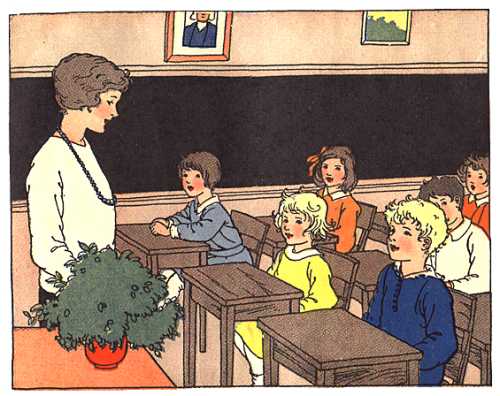 Deputy Headmistress continues to blog the book angle intensively, as does Valerie Jacobsen (read this post in particular). Note also the comment from Nancy Welliver on her February 11 post: “We are a used curriculum and book seller. We have removed 3,500 books from our website. … until recently publishers did not put printing dates in books, only copyright dates. So a book that is copyrighted 1976 may have been printed in 1988 and therefore legal to sell, So how do we know which are printed before and which after 1985? So we have removed all books for children with copyright date 1985 and before.” There’s also a page at cpsia-central (the Ning group) on books and libraries.
Deputy Headmistress continues to blog the book angle intensively, as does Valerie Jacobsen (read this post in particular). Note also the comment from Nancy Welliver on her February 11 post: “We are a used curriculum and book seller. We have removed 3,500 books from our website. … until recently publishers did not put printing dates in books, only copyright dates. So a book that is copyrighted 1976 may have been printed in 1988 and therefore legal to sell, So how do we know which are printed before and which after 1985? So we have removed all books for children with copyright date 1985 and before.” There’s also a page at cpsia-central (the Ning group) on books and libraries. - The law is also having a major impact on sellers of new children’s books, given that the only newer books presumed safe for legal purposes without testing are completely plain books with no embellishments or non-paper features. Don’t miss the letter at Wellspring Creations from “Jackie”, who identifies herself as the manager of the children’s book section at a Half Price Books store, part of a large chain that sells publisher’s remainders and overstocks as well as used books:
I have experienced the severity of this issue first-hand. … Initially, it didn’t seem like this would have much of an impact on the kids section, but as I went through my section pulling everything that was potentially harmful, I soon realized that this was going to decimate my section. My display tables were over halfway empty, and there were half-empty or completely empty shelves all throughout the section. … The kids cooking shelf went from being packed full to only having half a dozen books left, all because most of the cookbooks were spiral-bound with metal. …
The day that I had to get rid of all those books was one of the roughest days I’ve ever had at work. The kids section is my pride and joy, my baby, and I had to not only watch it get torn apart- I had to do it myself. It was heartbreaking.
The happy ending, if you want to call it that, is that eventually many or most of the new books are likely to return to the shelves after the chain puts them through testing — though it’s more likely to take such a step for a mass-selling branded item piled high on display tables than for a specialty cookbook expected to sell only in the dozens of copies. Go read the whole thing.
- Community Homestead is a center for developmentally disabled adults in rural Wisconsin that has sold residents’ handcraft toys. Its CPSIA story is here.
- Dust-ups in comments sections are not my thing, but some people enjoy them, and they keep breaking out on the occasions when someone still attempts an aggressive defense of this bad law. Thus when the Chicago Daily Herald printed a letter from Alexandra Lozanoff of the Illinois Public Interest Research Group (PIRG) yesterday rhapsodizing about the law, numerous commenters jumped in to express rather sharp disagreement. A state legislator in Orangeburg, South Carolina put her name to a piece in the local paper attacking Sen. Jim DeMint for sponsoring CPSIA reform, provoking dozens of comments, most taking issue. The Natural Resources Defense Council, which is invested in defending CPSIA in part because of the law’s phthalates ban, ran an ill-informed piece pretentiously titled “The Artisan Toymaker’s CPSIA Exemption Guide” and was promptly spanked by knowledgeable commenters, a fate that also befell the left-leaning crew at Moms Rising. The lengthy comments section on John Holbo’s thoughtful followup post at Crooked Timber presented the spectacle of one agitated and flailing defender of the law pretty much surrounded by people trying to talk sense into him. Someone adopting the monicker “Civil Justice” wandered into the Etsy forums to push Lawsuit Lobby views and was not met with pleasure by the assembled crafters, an episode which may be related to the one already told about how the misnamed Center for Justice and Democracy, a group with views antipodal to our own, suggested that we all were insensitive to children’s health and then refused to let any letters from critics through moderation, claiming to feel threatened by the letters’ tone (examples of the sorts of letter CJD found too intimidating in tone to run: Mark Riffey, Olivia @ BabyCandyStore). Some other previously linked comments discussions: The Pump Handle (profoundly misguided contributor corrected by Deputy Headmistress, Kathleen Fasanella, etc.), Consumer Reports, Greco Woodcrafting (Public Citizen’s David Arkush vs. the world), and, of course, Justinian Lane.
- Even a casual acquaintance with CPSIA blogging is enough to show that homeschooling parents have taken an extraordinary role in leading the resistance to the law. Bloggers like CalifMom have predicted that the law will have numerous harmful impacts on homeschoolers, and homeschool curriculum suppliers such as Hands and Hearts History Discovery Kits and Hope Chest Legacy have already closed down because of the impracticability of compliance. So it’s unfortunate that the Home School Legal Defense Association (HSLDA) seems to have so little clue what’s going on.
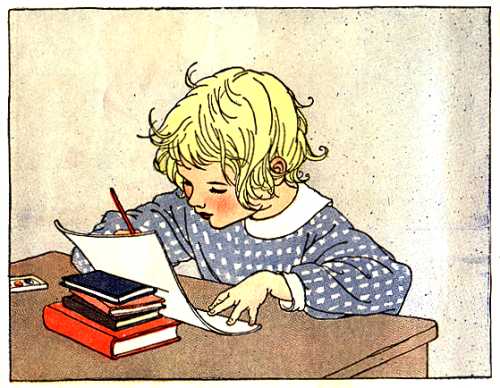
CPSIA: N.Y. Times runs three letters
[Title of post revised to reflect the paper’s printing of two more letters in its online (but not physical) edition on Monday.]
When I blasted the New York Times for its wretched editorial on CPSIA Wednesday, Patrick (SSFC/Popehat) made the following prediction:
Those tempted to write the Times to inform its readers about where this editorial gets it wrong will find that, no matter how many letters in opposition are received, the Times will print exactly one. The Times will also print one letter of thanks, from Greg Packer or someone affiliated with PIRG.
It is too early to say whether Patrick’s prediction will come true [see below for update]; the Times did print one short letter today from Nancy Nord of the CPSC, which fits the scheme, but there’s no way of knowing whether it will return to the subject in days to come with a letter supporting its editorial view or additional letters from critics. Before according the Times’ editors any credit for running this one, remember that having called for the removal of a named federal official, they really had to publish a letter from her in response; today’s letter as one would expect is mostly devoted to defending her record while also containing exactly one sentence disputing the Times’ ludicrous and much-derided assertion that fears of harm to small businesses are “needless”.
For the ordinary Times reader who knows little about this issue and is glad to skip to the next item, it will be easy to dismiss a short letter from a Bush appointee seeking to defend her managerial record. What else would you expect a Bush appointee to do? It would be a different matter — something to pause at, maybe ask questions — if a challenge to the Times’ assertions were to appear from wooden toymakers in New England, from apparel crafters in New York City’s garment district, from people who manage thrift and consignment stores, or from someone who deals in used children’s books. But — so far, at least — Times readers have been spared the danger of hearing any such discordant voices.
Update Monday a.m.: the Times online edition, though not the physical paper, runs two more letters today, and in doing so slightly (but only slightly) falsifies Patrick’s cynical prediction. The letter favorable to its own position, and ascribing no fault to the law other than its lack of tougher enforcement, comes not from PIRG but from David Pittle of Consumers Union (better prestige that way). And the Times also prints a mildly critical letter from the Toy Manufacturers of America, a group that 1) endorsed the law as a matter of general principle; 2) is often described in press coverage as closely aligned with giant toymakers who can live with its terms; 3) is cautious if not bland in its objections (“unrealistic”, “unwarranted”, etc.); 4) from its name and niche, reinforces the misimpression that “toys” are mostly what are at stake here, rather than a far wider range of children’s products ranging from books to apparel to minibikes. For all readers can discern from this TMA letter (and we do not, of course, know what the Times chose to condense or cut) the main economic costs of CPSIA might take the form of a quarter of down profits at Mattel or Hasbro. I have more to say in this earlier post about the tendency of CPSIA advocates to designate large and politically cautious industrial concerns as “the other” side for the press to consult, even though their interests and viewpoints may diverge widely from those of the smaller and family firms that dominate much of the children’s product trade. As of Monday, persons whose sole news source is the New York Times (especially the paper version) still have no idea that the law imposes any unusual burdens on this latter group.
Public domain image courtesy Grandma’s Graphics, Anne Anderson.
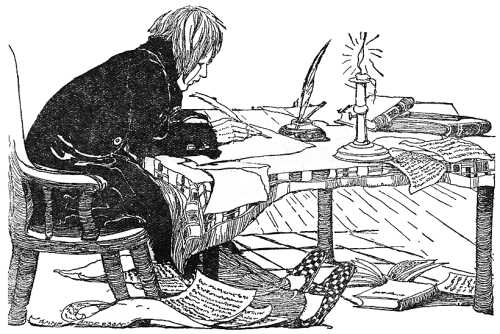
CPSIA chronicles, February 21
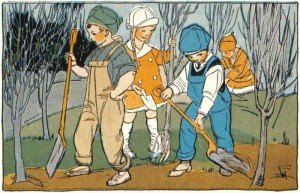
- For the Handmade Toy Alliance, Jill Chuckas responds to the NYT’s ever-so-clueless CPSIA editorial. The Alliance also recently published a Myth vs. Fact sheet. Among the points addressed: “Myth: Violations of the CPSIA this year will not result in penalties.” “Myth: Further clarification is all that is needed.” and “Myth: Products Tested to European Union Standards will Satisfy New US Standards”. And did you know it’s now unlawful to donate to a charity (let alone sell) a children’s item with paint on it, even if you painted it yourself using lead-free paint, if you haven’t put it out for third-party testing?
- It’s my impression that beyond the precincts of the “consumer”/Litigation Lobby groups, the bill’s original sponsors on Capitol Hill, and of course the New York Times, it’s getting harder to find all-out boosters of the law who still maintain there’s nothing wrong with it. On Tuesday, however, the Houston Chronicle did publish a perfectly inane editorial taking this view, the refutation of which is left as an exercise to the reader.
- Deputy Headmistress at Common Room has taken the lead in blogging many angles of the law and her latest must-read examines the legislative history of CPSIA’s enactment, including the roles of Public Citizen, the Consumer Federation of America, PIRG, and Sen. Mark Pryor (D-Ark.), as well as business groups like NAM, the latter of which warned against some of the law’s more extreme provisions as placing various advantages into the hands of plaintiff’s lawyers. This makes a good jumping-off point for further research on whether the ongoing CPSIA calamity should truly be regarded as a case of “unintended consequences” and, if so, unintended by whom. One tidbit among many: she says that Travis Plunkett, testifying for the Consumer Federation of America, spoke in favor of rules (not adopted) under which “all product sellers [would] be required to post bonds sufficient to cover the costs of a recall in advance of any ‘potential’ recalls.” Typical New York Times coverage of the day, by the reliably pro-regulation Stephen Labaton, can be found here.
- Tom Pearson, Punditry by the Pint:
I’ve written before how law and regulation can be an insurmountable impediment for the weakest, poorest and most powerless in our society. In this case at least we will partly realize what we’re missing when the great independent thrift and book shops start going under and fewer people make handcrafted clothing and toys for children. Still, we’ll never see what could have been in this small niche of our largely self-created social order. This is how the American dream of hope and opportunity dies, one well-intentioned, but misguided rule at a time.
Life is a messy and wonderful experience. If you try to hermetically seal life, even children’s lives, from risk, you will kill all that messiness and creativity that makes life worth living. Yes, risk can be damaging, painful and even fatal, but, in this case, the cure is worse than the disease.
Another libertarian view from J.D. Tuccille in the Examiner: “In the name of the children, we cut the kids off from their own history.”
- Yesterday (Friday) the Consumer Product Safety Commission published a bundle of letters it received pro and con on proposed exemptions from the lead rules. Plenty of raw material here for CPSIA-watchers (long PDF file);
- Since many people these days visit Overlawyered for the ongoing coverage on this topic, I’ve added a new display on the rightmost sidebar (under the red teddy-bear-as-St.-Sebastian icon) with sub-category tag links for libraries, apparel and needle trades, toys, and so forth. I’ve populated these categories with old posts somewhat in haste, so if you see omitted posts that aren’t tagged with relevant labels, give me a shout.
Public domain image: Grandma’s Graphics, Ruth Mary Hallock.
